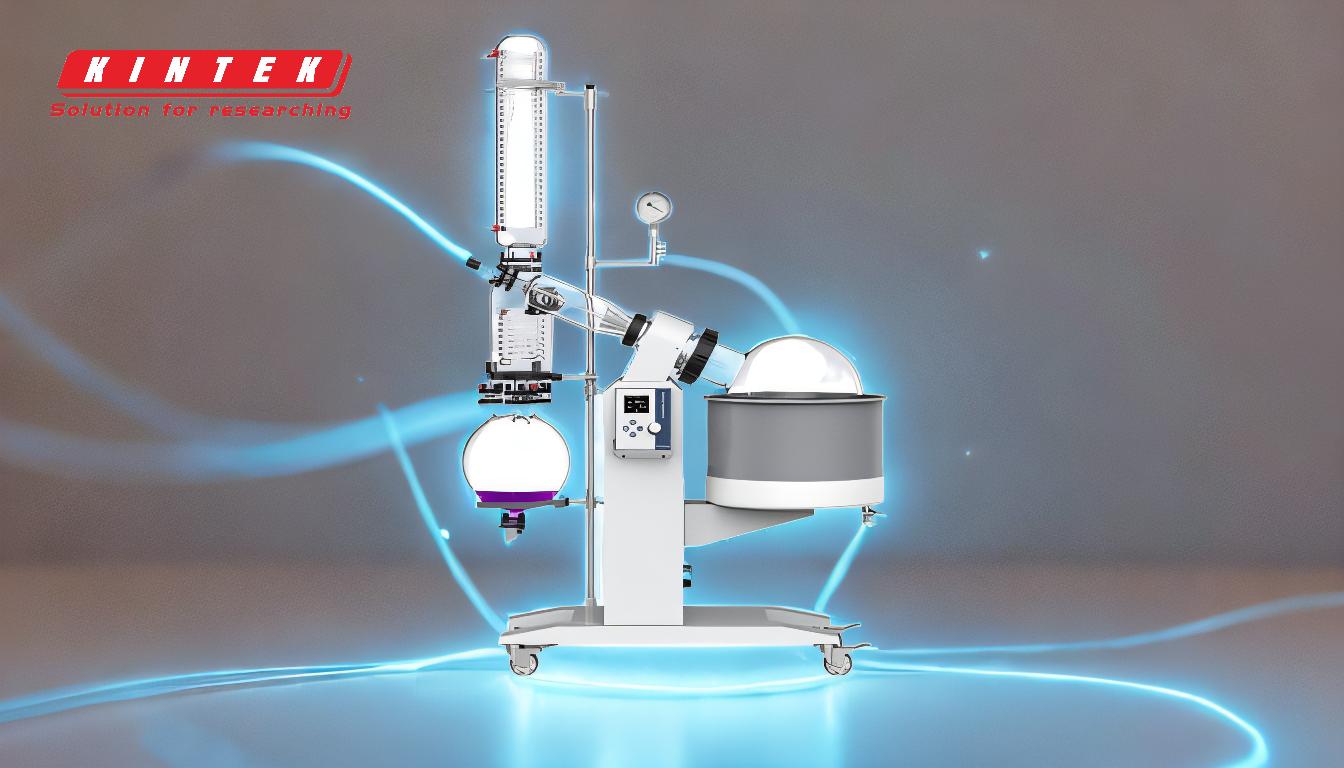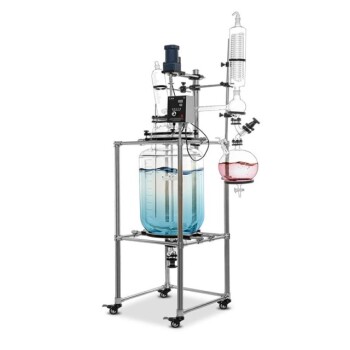Rotary evaporation is an efficient method for removing solvents from a mixture due to its ability to create a thin film of the liquid on the flask's surface, significantly increasing the surface area for evaporation. This process is further enhanced by precise control over temperature and pressure, which prevents overheating and oxidation of the target compound. The method is not only faster but also safer, reducing the risk of bumping and sample loss. Additionally, rotary evaporators are energy-efficient and capable of handling large volumes, making them ideal for both laboratory and industrial applications.
Key Points Explained:

-
Increased Surface Area for Evaporation:
- Thin Film Formation: The rotary evaporator rotates the flask, spreading the liquid into a thin film across the inner surface. This thin film provides a large surface area, which accelerates the evaporation process.
- Efficiency in Solvent Removal: The increased surface area allows for more efficient and faster removal of solvents, especially beneficial when dealing with large volumes.
-
Precise Control Over Temperature and Pressure:
- Temperature Control: Rotary evaporators allow for precise temperature adjustments, ensuring that the solvent is evaporated at an optimal temperature without overheating the mixture.
- Pressure Control: By operating under reduced pressure, the boiling point of the solvent is lowered, which helps in preventing the degradation of heat-sensitive compounds.
-
Safety and Sample Integrity:
- Prevention of Bumping: The formation of a thin liquid film minimizes the risk of bumping, a phenomenon where sudden bursts of boiling can cause sample loss or contamination.
- Reduced Risk of Oxidation: Operating at lower temperatures and under vacuum reduces the exposure of the sample to oxygen, thereby minimizing the risk of oxidation.
-
Energy Efficiency and Speed:
- Lower Energy Consumption: Compared to traditional boiling methods, rotary evaporation requires less energy, making it a more sustainable option.
- Rapid Solvent Removal: The process is significantly faster, often reducing the time required for solvent removal from several hours to just a few minutes.
-
Versatility and Scalability:
- Handling Large Volumes: Rotary evaporators can efficiently handle volumes up to 1 liter, making them suitable for both small-scale laboratory use and larger industrial applications.
- Compatibility with Various Solvents: They are particularly effective for low boiling point solvents and can be adapted for a wide range of chemical processes.
-
Design and Operational Advantages:
- Compact and User-Friendly: The design of rotary evaporators is compact, making them easy to integrate into laboratory setups. They also feature improvements in user interface and safety.
- Leakproof and Durable: The equipment is designed to be leakproof and durable, ensuring long-term reliability and minimal maintenance.
In summary, rotary evaporation stands out as a highly efficient, safe, and versatile method for solvent removal, offering significant advantages in terms of speed, energy efficiency, and sample integrity. Its ability to precisely control environmental conditions and handle large volumes makes it an indispensable tool in modern laboratories and industrial settings.
Summary Table:
| Key Advantages of Rotary Evaporation | Details |
|---|---|
| Increased Surface Area | Thin film formation accelerates evaporation, ideal for large volumes. |
| Precise Temperature & Pressure Control | Prevents overheating and oxidation, ensuring sample integrity. |
| Safety & Sample Protection | Minimizes bumping and reduces oxidation risks. |
| Energy Efficiency & Speed | Lower energy consumption and faster solvent removal. |
| Versatility & Scalability | Handles up to 1 liter, suitable for labs and industrial use. |
| Compact & Durable Design | User-friendly, leakproof, and long-lasting equipment. |
Ready to optimize your solvent removal process? Contact us today to learn more about rotary evaporators!
















